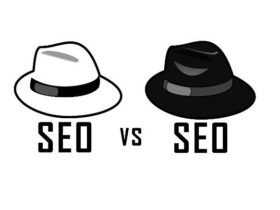Cloud architecture and hosting is rapidly changing the IT world. With each passing day, there is some new technology in this domain and one of the latest strategies is the Multi-Cloud Strategy.
But what is a Multi-Cloud strategy?
Simply put, this strategy means distributing workload across several cloud platforms in order to derive various benefits as well as mitigating risk. The risk here comprises two things- risk of outage, and the threat from online attacks.
Enterprise IT and Multi-Cloud
- ROI Optimization
Despite cloud being a very important part of IT, there is no set definition of a perfect cloud architecture or platform. Various vendors present their own versions of data centers, servers, etc. Each of those versions have a different capability and may or may not suit your business requirements. The situation gets complicated when you, as a business owner, do not quite understand which cloud vendor has the most appropriate platform for your business. Which platform can host your apps, integrations, and other functionalities?
Enterprise IT recognizes this problem and therefore, doesn’t lay all its ‘eggs’ or resources into just one basket. With multi-cloud environment, you can take up all the available cloud options and see which one of those meets your criteria. Superficially, it seems a bit like trial and error but over a period, you can judge for yourself which particular cloud platform justifies your investment.
- Superior Security
If you have lots of sensitive information on your apps which you want to put out on cloud, then, there are three ways of looking at this issue. The first one is using the public cloud platforms, but there is an attendant risk when you share your hosting with masses. Your critical business information might not be adequately secured on these platforms, which brings us to the second alternative.
You may also like to use your own private cloud network which is definitely expensive not just in terms of hardware and software cost but also manpower. So how do you arrive at the right balance?
This can be achieved by using a hybrid cloud environment. Store your mission critical information on your private cloud while the more general information can be hosted on public platforms. Since, security is of highest priority when it comes to business assets like website, you can also look for cloud hosting providers who offer advanced security for the sensitive website data. This way you balance security with cost.
- Low Latency
Latency refers to that situation when data transmission speeds over cloud are slow. In a cloud, information is stored on several servers located globally. When data travels from one server to the user, it has to cross several nodes (information junctions). Often, the presence of these nodes slows down the flow of information and this causes latency.
In a multi cloud environment, this latency is minimized to a great extent. If you are using two or more cloud platforms, you can optimize latency by picking up the right combinations of servers so that information travels faster to the intended user. If you are the admin of an Enterprise IT, ask your cloud provider about removing or reducing latency.
Lastly, the reason why many global enterprises are enthusiastic about Multi-Cloud is very low downtime. This means there is a very low possibility that your global online presence goes down for even a second. This risk is mitigated because your workload is distributed over several modern data centres.











